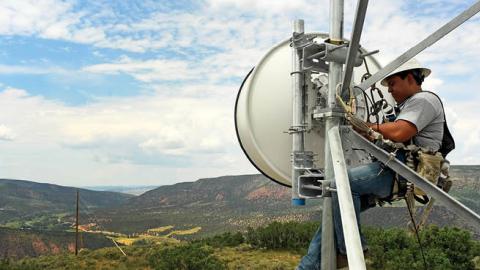The COVID-19 pandemic has shone a blinding spotlight on the importance to American families of access to high-speed broadband. Thanks in no small part to broadband technology, many who would not have been able to do so otherwise have continued to be employed, connected, fed, educated, and entertained while remaining socially distant. While too many households still lack sufficient broadband—by any measure, millions live in areas with substandard service—current broadband availability would be much worse if the private sector had not invested in, upgraded, and expanded broadband networks over the years. The decisions to undertake these activities have been praiseworthy, as have providers’ steadfast efforts to ensure continued operations, both at the service and network levels, during the pandemic.
Similarly, Congress, the Federal Communications Commission (FCC), and other federal and state agencies deserve much credit for a range of efforts and solutions instituted over the previous decade to aid broadband buildout in areas where private investment alone couldn’t justify the total associated expenditures required. Credit is particularly due to the FCC for initiatives that have increased its support programs’ efficiency and for ones that have required funding recipients to meet enforceable deployment obligations through such mechanisms as incentive-based regulation. One such effort that I helped spearhead during my time at the FCC is the Alternative Connect America Cost Model, or “A-CAM,” which enabled rate-of-return providers to elect to participate in a program providing them fixed support over a predetermined time interval in exchange for meeting mandatory buildout obligations. The A-CAM program has achieved measurable results in bringing broadband service to rural areas.
In spite of its accomplishments to date, still more can be done to leverage the A-CAM program’s success, as the proposal recently submitted by a group of A-CAM providers demonstrates. The proposal includes expansion of the program’s provider support term in exchange for these providers’ supplying significantly higher broadband speeds and accelerated deployment. Although I disagree with those demanding an increase in the Commission’s broadband speed standard while millions remain completely without access, if that is the direction in which leaders are determined to proceed, the new A-CAM proposal provides a promising approach to deliver much faster speeds deployed quickly. In particular, the proposal’s plan to give electing providers additional years of funding certainty without increasing funding levels appears to be a productive way to advance broadband in rural America. This proposal is worthy of serious consideration and that its adoption, in some form, would result in many more American families gaining access to high-speed broadband.
__The opinions expressed in this paper are those of the author and are not intended to be a submission to the Federal Communications Commission with the intent to influence agency employees in the performance of their official duties in any current or future Commission matter.__

















